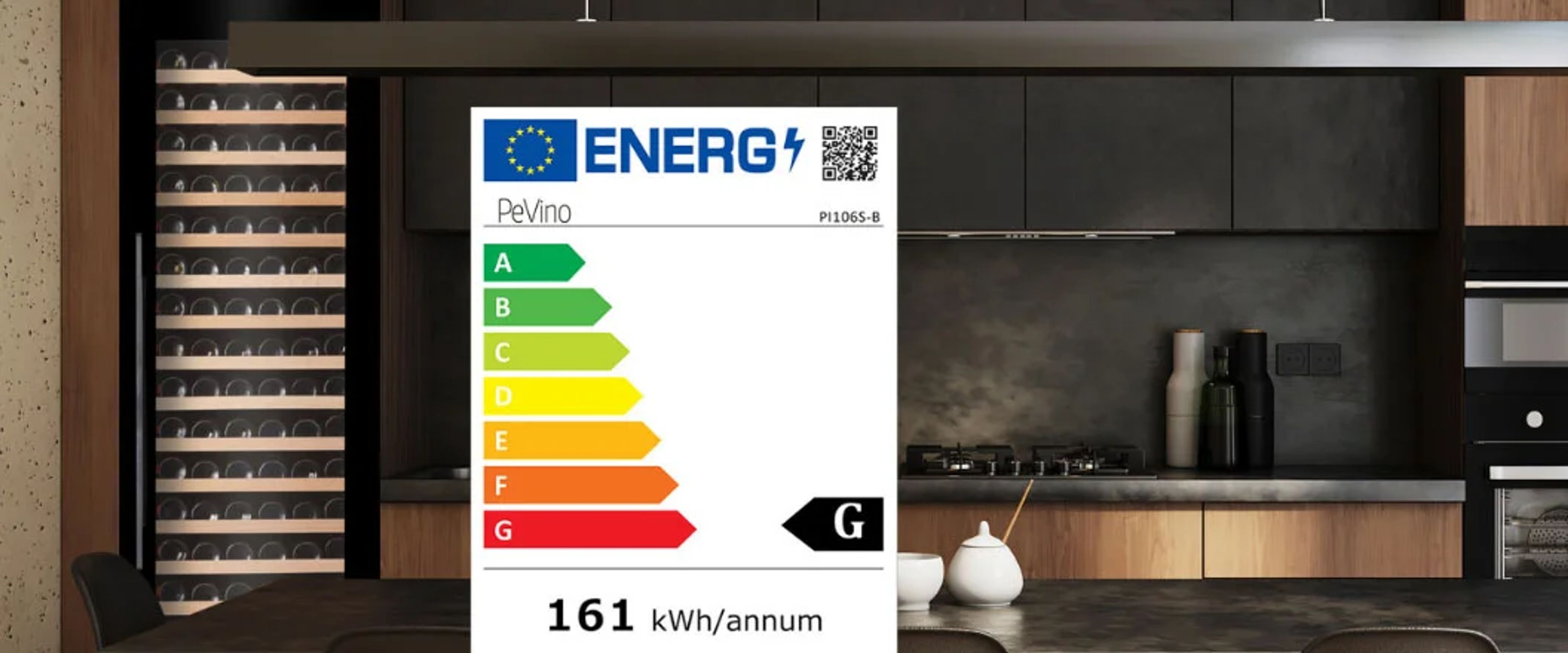
Guides
Guide to the EU's new energy labeling
The EU's new energy label
From 1 March 2021, the EU will introduce new and updated energy labels to make it easier for you as a consumer to choose the most energy efficient oven, tumble dryer or, perhaps most importantly, wine fridge!
The EU energy label shows you how much energy a product, such as a wine fridge for example, uses in comparison to another product of the same type. The new scheme for energy labels applies to all white goods and other electronic products to be sold within the EU.

What is new?
Both the old and the new EU scheme for energy labels divide the products' energy classes on a scale from G to A, where A is the most energy efficient. However, due to technological development, in recent years it has been possible to see products in energy class A+, A++ and A+++, i.e. products that "break the scale".
With the new energy labels, the possibility of +s is removed, but on the other hand, the requirements are tightened for a product to reach energy class A. A product that was previously in energy class A, will therefore now e.g. be in energy class E, F or G.
So it is only the scale itself that changes. There may, however, be minor changes to the new energy labels, e.g. in a wine refrigerator's annual energy consumption, since the EU has also changed the calculation and testing methods that form the basis of the values on the new energy labels.
From the EU's own website about the new system:
"With the revised requirements, some calculation methods have been changed, which means that values on the re-scaled energy label may differ slightly from the current label. However, the product is the same."
Source: Label2020.dk
With the new scheme, the EU has made room for manufacturers to make their products even more energy efficient in the coming years. This means that to begin with, you will not be able to find products with energy class A on the market.
From the EU's own website about the new system:
"There will be no products in energy class "A" when the re-scaled brands become visible in stores. The goal has been that there should be no products in energy class "A" when the brand is introduced to ensure space for further product development.
Source: Label2020.dk
Certain products will not be able to meet the requirements under the new scheme, but these may be sold with the old energy label until 1 December 2021, after which they will expire.
From 1 December 2021, the old energy labels will be completely phased out, but until then you may experience seeing both new and old energy labels on certain products.
Fact box
From 1 March 2021, the EU will introduce a new scheme for energy labeling that should make it easier for you to choose a more energy-efficient electronic product, such as e.g. a wine fridge.
The new scheme for energy labeling uses a scale from G to A, where A is the most energy efficient. With the new energy labels, the option to use A+, A++ and A+++ is removed, but the requirements for a product to reach energy class A are tightened in return.
Only the energy labeling scale itself changes. There may, however, be minor changes to the new energy labels, e.g. in a wine refrigerator's annual energy consumption, since the EU has also changed the calculation and testing methods that form the basis of the values on the new energy labels.
From 1 December 2021, it is no longer legal to sell a large number of electronic products, including wine refrigerators, which do not have an energy label that meets the new EU scheme.